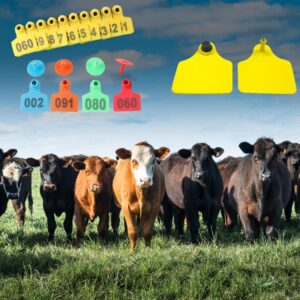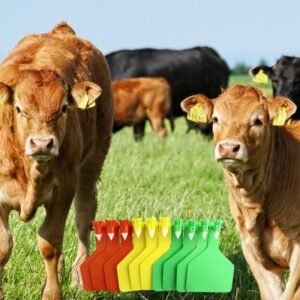Expert Guide: Proper Ear Tagging Techniques for Cattle and Calves
Mastering proper ear tags using cattle techniques is crucial for effective livestock management and identification. This comprehensive guide provides essential information about applying ear tags correctly to ensure animal welfare and maximize tag retention rates.
Key Benefits:
- Permanent Identification
- Improved Herd Management
- Reduced Tag Loss
- Minimized Animal Stress

Essential Equipment and Preparation for Ear Tags in Cattle
Proper preparation is crucial before beginning the tagging process. The tags and tag applicator must be in excellent condition to ensure successful application. Having enough tags and applicators on hand before starting is essential, as an old and rusty tag applicator may be challenging to squeeze or make loud noises that could startle the animal. Always use proper hygiene and cleanliness protocols to minimize the risk of infection.
Required Materials:
Proper Restraint and Positioning Techniques
Properly securing the animal is crucial for successful tag application. The best way is to position the animal in a head gate or suitable restraint system that allows easy access to the ears while keeping the handler and the animal safe. Extra care must be taken to ensure gentle but firm restraint when tagging calves.

Precise Tag Application Process
The actual tagging process requires careful attention to detail. The stud should be centered in the middle third of the ear, avoiding the thicker cartilage and major blood vessels. When applying the tag, identify the tagging site between the two large veins, clean the area thoroughly, and position the applicator correctly before making a quick, firm movement to insert the tag.
Critical Steps:
- Clean the tagging site withan approved disinfectant
- Position tag in the middle one-third of the ear
- Place tag with the visual panel on the outside back of the ear
- Ensure the EID button (if applicable) faces the inside of the ear
- Apply firm, swift pressure to close the applicator
“Proper placement and technique are essential for long-term tag retention and animal health.” – Oklahoma State University
Post-Application Care:
- Monitor the tagging site for signs of infection
- Document tag numbers and necessary data on the animal
- Observe the animal for several days following the application
- Apply peroxide directly to the ear tag puncture for five days if needed
Remember that improper tagging can lead to complications and tag loss. For optimal results, consult your veterinarian about specific recommendations for your herd’s tagging program. With proper technique and attention to detail, ear tagging can be an effective tool for livestock management.
